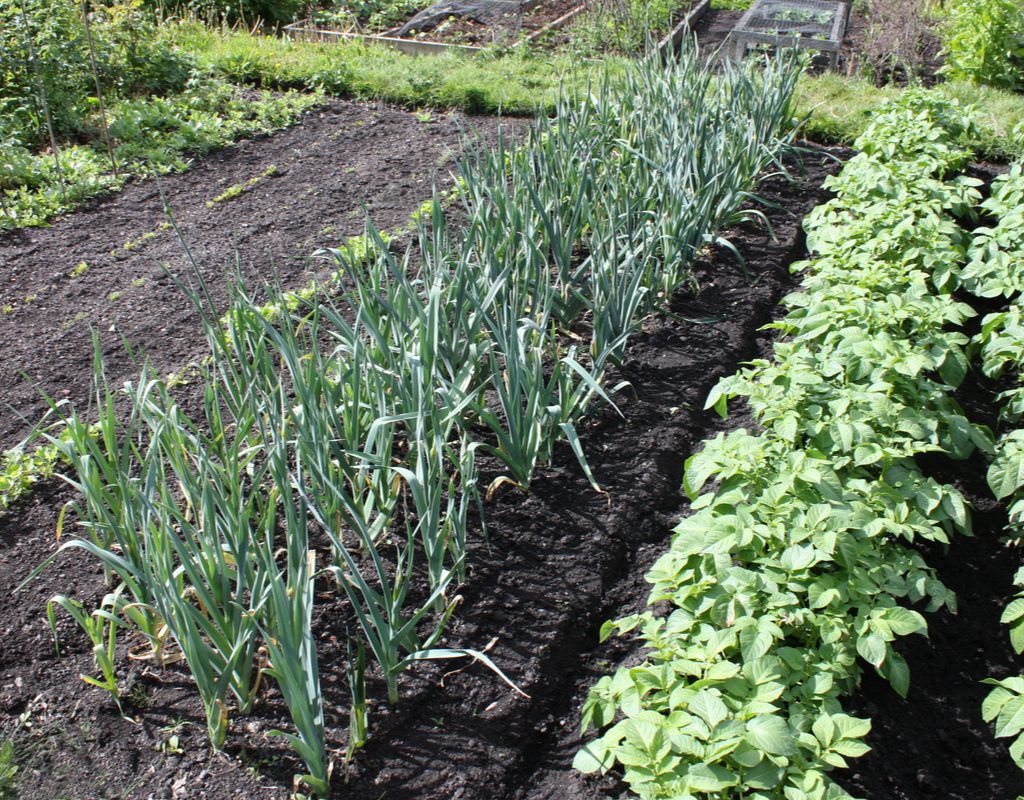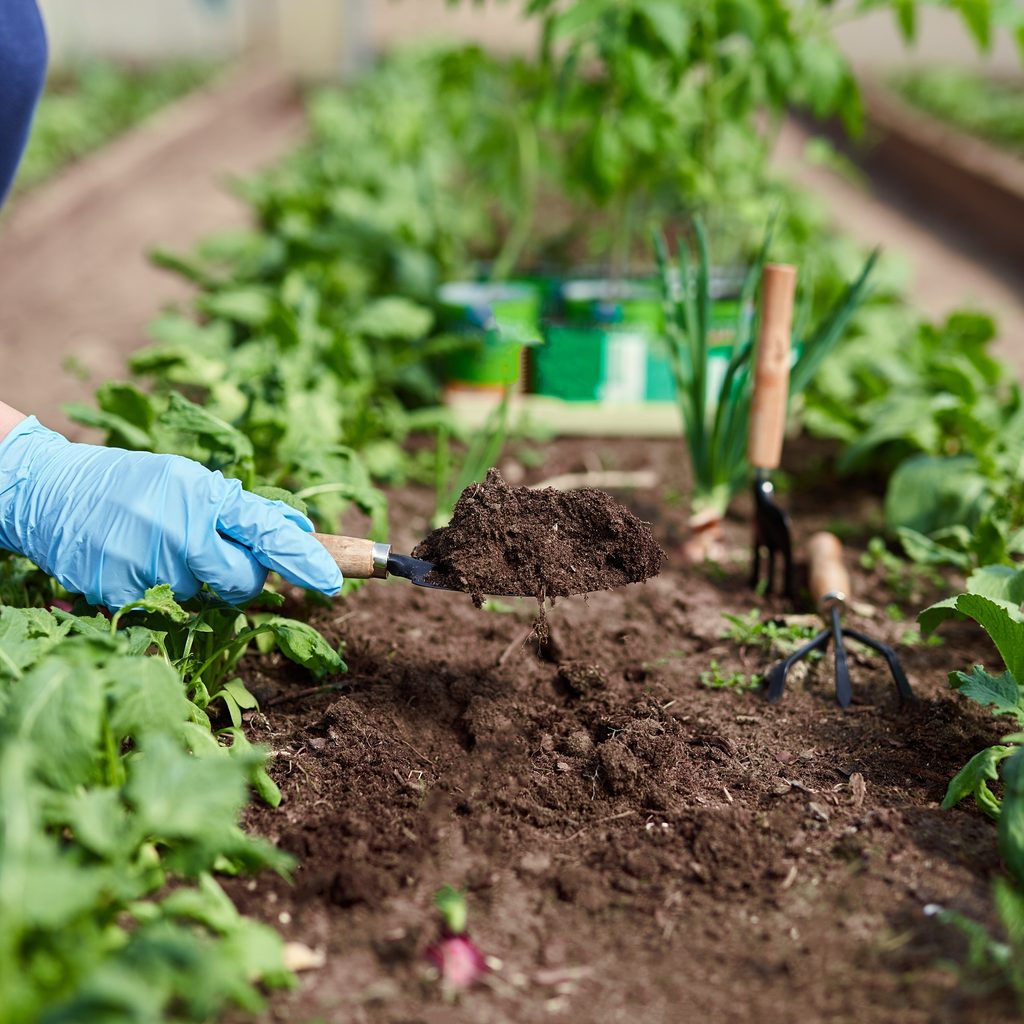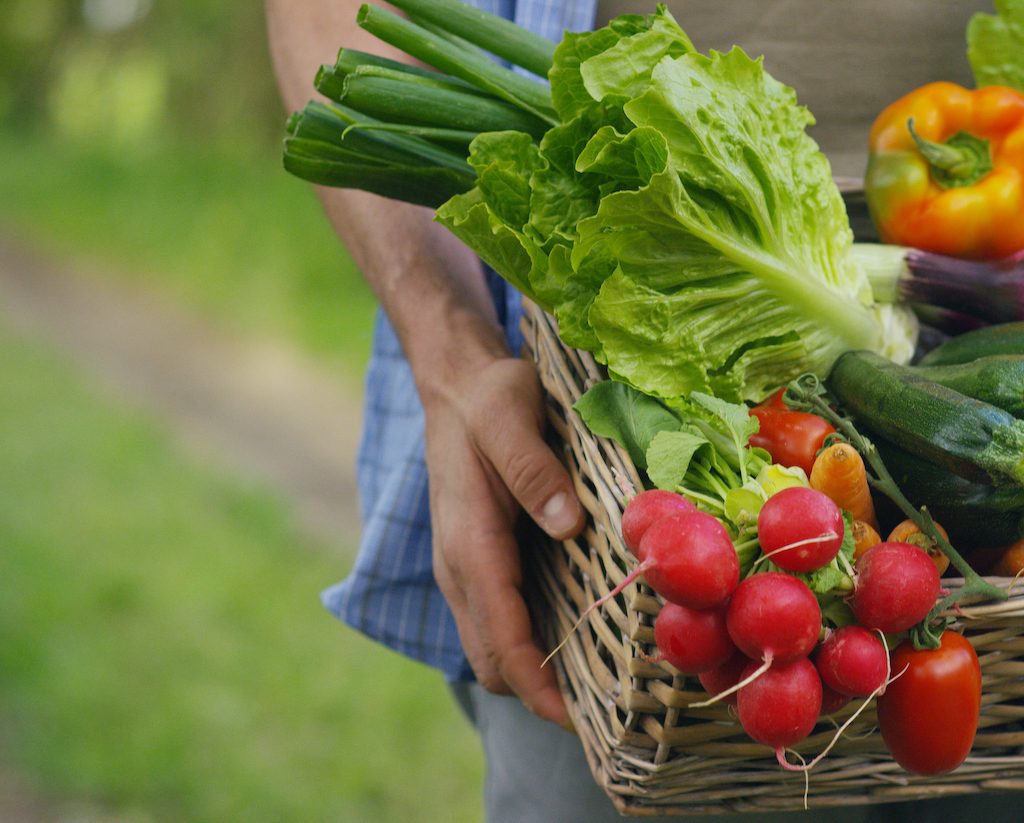Starting a vegetable garden is a wonderful goal, especially when summer comes and you can enjoy a fresh bounty of tomatoes, corn, squash, potatoes, and other delicious homegrown delights. Plus, learning a new skill while also saving money instead of going to the grocery store is an added bonus. However, if you’re a newcomer to planting a vegetable garden, it can be a little intimidating since you don’t want to accidentally kill your plants and waste resources and money.
Don’t worry! Gardening can be a rewarding hobby and one you’ll get the hang of in no time. We will guide you through the basics of how to plan a vegetable garden, how to choose the right location, what the right size garden is for you, and which vegetables to grow.

Choose the correct location
You may be thinking, “Don’t I just choose a location that is really sunny?” While sunlight is important, there are other things to consider when choosing a spot for your vegetable garden. A subpar location can (and probably will) result in lackluster vegetables. Who wants that? Here are four things to keep in mind when choosing your vegetable garden location:
- Pick a spot that receives lots of sunlight. We will get the obvious point out of the way first. Most vegetables require six to eight hours of direct sunlight every day. While there are some vegetables that can handle being in the shade (primarily leafy ones like lettuce), it is imperative that you choose a spot that receives direct sunlight for most of the day.
- The location drains well. You want your soil to allow water to quickly and easily flow through it. Pools of water can cause your vegetables to have wet roots, which leads to rot. If your soil drains poorly, plant vegetables in a raised bed for improved drainage. If your soil is rocky, till the soil and remove the rocks so the roots can grow more easily.
- The location is not too windy. Strong winds can push over young plants and stop pollinating insects from getting to your plants. Choose a location that is just right; not too windy, not too much foot traffic, and someplace that doesn’t flood easily.
- The soil has lots of nutrients. If your soil lacks nutrients, then your plants will suffer and you’ll see little produce. Thankfully, there is an easy fix. Head to your local gardening store and pick up lots of organic matter and mix it with the soil. This will expand your location options when choosing where to plant your garden.

Choose the size of your garden
If there is one tip to always remember, it is this: Do not bite off more than you can chew, pun intended. One of the most common things that beginners do is plant way too many vegetables. It is better to love your smaller garden that hate your bigger one. Plan your garden with care by starting small and growing only what you absolutely know you will eat and have time to manage. Here are a few sizes to think about when planning:
- Planting in the ground. If you have chosen a location that allows you to plant in the ground, then a 10×10-foot garden (100 square feet) is the perfect size for a beginner. Choose four or five of your favorite veggies and then go to the store and buy seed packages or three to five plants of each one.
- Planting in a raised bed. Should you choose a raised vegetable bed, then two good beginner sizes are 4×4 feet or 4×8 feet. Don’t worry if you haven’t built a raised bed before. They are easy to build and some can be bought pre-built at hardware stores.
- Go bigger, but be careful. If you insist on going all out for your vegetable garden, then the largest size we recommend for a beginner is 12×24 feet. A garden this size can hold lots of vegetables for a family of four, including squash, zucchini, peppers, okra, bush beans, and assorted herbs. If you are living by yourself, we suggest going smaller so you do not waste food.
Don’t forget to leave a four-foot-wide path so you can easily access your plants for weeding and harvesting. Also, make sure you can reach the center row of vegetables so you don’t have to step on the soil to reach them.

Choose the vegetables
There are many beginner-friendly vegetables you can choose from to get started. However, we suggest contacting your state’s Cooperative Extension Service first. These departments were created to help farmers know what plants grow best in their area. It is an incredible resource so you don’t plant vegetables that prefer cooler temperatures in the middle of Texas. With the being said, five vegetables that are a safe bet for most people are lettuce, green beans, radishes, tomatoes, and zucchini. Honorable mentions include carrots, beets, spinach, and peas.
When you start planting, don’t just choose just any spot for any vegetable. There are actually a few rules to follow when arranging your vegetables:
- You can’t plant all vegetables at the same time. Some vegetables are meant for cooler weather, such as broccoli and lettuce , whereas some vegetables prefer warmer weather, such as tomatoes and peppers. Do your research for each vegetable to know when to plant.
- Stagger when you plant seeds. If you plant all of your tomato seeds in the same week, you will suddenly have to harvest way too many tomatoes and some will go to waste. Stagger your planting by a few weeks so you have a consistent stream of vegetables.
- If you decide to plant tall vegetables, such as sweet corn, then plant them on the north side of your garden. If you plant on the west or east sides, where the sun rises and sets, the tall plants will block the sun from the smaller plants.
- Different vegetables have different lengths of time they take to mature. Read the back of the seed packets and check how many days each vegetable takes to grow. Group vegetables with similar harvest periods together so you stay organized.
- When creating your garden, don’t just add vegetables. Also plant flowers, such as marigolds. These help deter pests, bring in pollinating insects, and can make your garden look even more beautiful.
Final thoughts
Planning a vegetable garden may seem like a daunting task, but anyone can create their perfect garden with a little work and dedication. Focus on the three main things: location, size, and the vegetables you want to eat. If you keep things simple and try your best, then chances are your garden will flourish with many colorful and beautiful vegetables for years to come.


